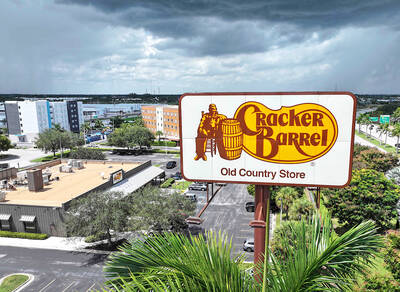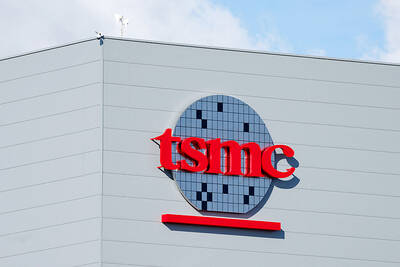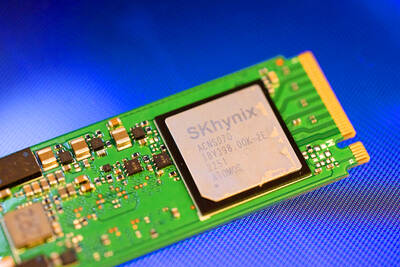It was a torrid 111 degrees in Woodland Hills, California, the Sunday before Labor Day, and the action at the local air-conditioned electronics store was hot. Scores of people were admiring the large wide-screen high-definition digital television sets, and at least one family was ready to buy.
Jeff Potts, a local contractor, was about to write a check for more than US$2,000 for an HDTV set. But after 30 minutes of discussion he left, exasperated and empty-handed.
"I want to step up to HDTV, but they're telling me I have to have service plans, extended warranties and special expensive cables to make this work," he said. "This is all too much."
Potts believed he could watch HDTV by using a satellite dish, but he would not have learned how from the confused salesman. Among other things, the salesman told shoppers that a standard DirecTV dish and digital decoder box were all that was needed to receive HDTV pictures, that HDTV programming was not available with an outdoor antenna or from the Dish Network and that the government had mandated that every television sold be an HDTV model. All of those statements were inaccurate.
But the lack of knowledge among sales personnel is not the only thing hampering the government-mandated switch from analog to digital television, a transition that most experts agree is now far behind schedule.
FCC guidance
The Federal Communications Commission stated in 1998 that "digital television promises to be one of the most significant developments in television technology since the advent of color television." Digital TV would offer extraordinarily sharp wide-screen images with surround sound and would allow for additional channels and other enhanced services.
By 2006, the government hoped, the switch to digital would be almost complete, and the current analog spectrum would be reclaimed and auctioned off for billions of dollars to telecommunications companies. Consumers would be enjoying the best-quality TV the world had ever seen.
Almost four years after the FCC's rosy prediction, the transition to digital broadcasting continues at a snail's pace. Despite a deadline of May 1, 2002, for the nation's 1,309 local commercial broadcast stations to begin digital transmission, only 393 have started doing so, the National Association of Broadcasters says. (Another 75 public stations are broadcasting digitally as well.) The rest of the commercial stations have received hardship waivers related to cost, delivery delays or, in the case of New York, the destruction of digital transmitters on Sept. 11 last year.
slow transition
On the consumer front, the vast majority of the 25 million television sets sold annually are still equipped to handle analog signals only. Just a handful of cable systems currently offer broadcasters' digital and high-definition feeds. Set-top digital decoder boxes, which are required for viewing a digital signal via an antenna or satellite dish, are hard to find and cost more than most standard television sets.
The FCC acknowledges that the transition has been rough. "We're midstream in a boat that some say has leaks," said W. Kenneth Ferree, chief of the commission's media bureau. "We're patching the leaks and trying to get to shore."
Some progress has been made. The Consumer Electronics Association expects slightly more than 2 million digital-ready sets (which require a decoder to use digital transmissions), fully digital television sets and tuners to be sold this year, and 4 million next year. The amount of HDTV programming has increased, and the cable TV industry seems to be on the verge of offering some HDTV programming in its largest systems.
Yet a recent survey by the Cable and Telecommunications Association for Marketing showed that 32 percent of adults have never heard of HDTV, 56 percent have no idea how to go about receiving it, and 81 percent are unlikely to buy an HDTV set in the next 12 months.
In 1996 the government decreed that the nation's broadcasting standard, in use for more than 50 years, would switch to a digital method of transmission. All of the nation's commercial and nonprofit broadcasters would need to purchase digital transmission equipment and broadcast both digital and analog signals for a while until the government decided that their analog feeds would be shut down.
government mandate
The government only decreed a switch to digital broadcasting; it never ordered broadcasters to transmit HDTV signals specifically, and stations are free never to do so. And the switch to digital was mandated for broadcasters only. Digital cable and digital satellite services like DirecTV use compression technologies to make more conventional analog signals available, with no improvement in picture quality required. Subscribing to either does not guarantee you will also receive broadcasters' digital feeds if and when they become available.
But when broadcasters transmit signals digitally over the air, they are vastly improved. With a digital broadcast, the picture is either perfect or, if you are too far away from the signal, nonexistent. Live in a fringe area, and the picture may pop in and out.
"With digital broadcast television, the choice of a lousy picture no longer exists," said Mark Schubin, an industry consultant in New York. Instead, it's all or nothing. In reception tests from the 64th floor of a New York skyscraper using a rabbit-ears antenna, Schubin and his colleagues were able to pick up only three of the nine digital stations in the New York area that were then broadcasting.
Such spotty reception is one reason that the Consumer Electronics Association and the National Association of Broadcasters are urging that cable systems be required to carry digital broadcast feeds. These groups also want a rule that digital televisions must be "cable-ready" -- able to receive digital broadcast signals via cable without the need for a set-top box.
"When the digital television transition started, we thought it would be driven by broadcasters," said Gary Shapiro, president of the Consumer Electronics Association. "What were we thinking? Cable and satellite is where the action is."
According to the FCC, more than 80 percent of American households subscribe to cable or satellite service. Under a voluntary agreement originated by the agency, 10 of the top cable television companies have pledged to offer at least five channels of HDTV or other digital programming in their markets with the greatest channel capacity by the beginning of next year.
But to accommodate those people who are not cable or satellite subscribers, the agency ruled last month that by July 2007 all new television sets 13 inches and larger must come equipped with a tuner for digital over-the-air broadcasts. Depending on who is doing the estimating, the addition of a digital tuner will add US$16 to US$250 to the price of a set.
So far Fox has shunned HDTV, instead using the wide-screen Enhanced Definition digital format, which the company says is perceived to be as sharp as HDTV by most viewers.
The network offers two-thirds of its nonsports programming with this system. Beginning this month, Fox will also offer wide-screen Enhanced Definition presentations of football and NASCAR racing each weekend to its digital viewers.
There is no guarantee that the broadcast networks will be able to get their HDTV offerings in front of cable subscribers' eyes, as the cable companies could decide to provide HDTV programming provided mainly by their industry. HBO and Showtime offer HDTV programming on separate channels available to DirecTV and Dish Network subscribers.

On Tuesday, US President Donald Trump weighed in on a pressing national issue: The rebranding of a restaurant chain. Last week, Cracker Barrel, a Tennessee company whose nationwide locations lean heavily on a cozy, old-timey aesthetic — “rocking chairs on the porch, a warm fire in the hearth, peg games on the table” — announced it was updating its logo. Uncle Herschel, the man who once appeared next to the letters with a barrel, was gone. It sparked ire on the right, with Donald Trump Jr leading a charge against the rebranding: “WTF is wrong with Cracker Barrel?!” Later, Trump Sr weighed

Taiwan Semiconductor Manufacturing Co (TSMC, 台積電) secured a record 70.2 percent share of the global foundry business in the second quarter, up from 67.6 percent the previous quarter, and continued widening its lead over second-placed Samsung Electronics Co, TrendForce Corp (集邦科技) said on Monday. TSMC posted US$30.24 billion in sales in the April-to-June period, up 18.5 percent from the previous quarter, driven by major smartphone customers entering their ramp-up cycle and robust demand for artificial intelligence chips, laptops and PCs, which boosted wafer shipments and average selling prices, TrendForce said in a report. Samsung’s sales also grew in the second quarter, up

HEADWINDS: Upfront investment is unavoidable in the merger, but cost savings would materialize over time, TS Financial Holding Co president Welch Lin said TS Financial Holding Co (台新新光金控) said it would take about two years before the benefits of its merger with Shin Kong Financial Holding Co (新光金控) become evident, as the group prioritizes the consolidation of its major subsidiaries. “The group’s priority is to complete the consolidation of different subsidiaries,” Welch Lin (林維俊), president of the nation’s fourth-largest financial conglomerate by assets, told reporters during its first earnings briefing since the merger took effect on July 24. The asset management units are scheduled to merge in November, followed by life insurance in January next year and securities operations in April, Lin said. Banking integration,

LOOPHOLES: The move is to end a break that was aiding foreign producers without any similar benefit for US manufacturers, the US Department of Commerce said US President Donald Trump’s administration would make it harder for Samsung Electronics Co and SK Hynix Inc to ship critical equipment to their chipmaking operations in China, dealing a potential blow to the companies’ production in the world’s largest semiconductor market. The US Department of Commerce in a notice published on Friday said that it was revoking waivers for Samsung and SK Hynix to use US technologies in their Chinese operations. The companies had been operating in China under regulations that allow them to import chipmaking equipment without applying for a new license each time. The move would revise what is known